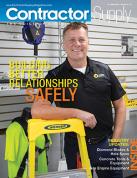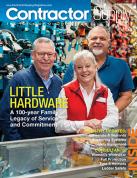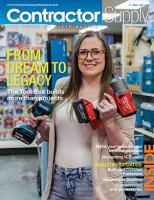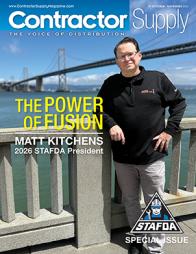Caliper: Your Blueprint for Winning
Your top performers are your key to beating the competition.
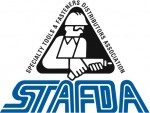 |
 |
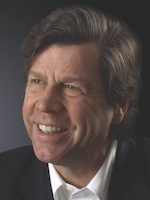 |
When the leaders at SAP unveiled the company’s vision for the year 2010, they knew that to accomplish their goals, they had to accelerate the development of their current top performers and redouble their efforts to identify people who had the potential to become their next top performers.
According to Paul Orleman, director of top talent management for SAP, the company which had been renowned for innovative technology since its founding in 1972, was also now intent on developing great talent.
But how does one of the world’s largest companies become an incubator for finding and keeping top talent, particularly when key competitors, with very deep pockets, are intent upon pirating that talent away?
SAP is taking a five-tiered approach to building upon its innovative and competitive culture and strategy for attracting top talent. These steps include:
- Assessing the strengths and growth opportunities of the organization’s top talent.
- Developing growth plans for each key individual. “This starts with understandingthe individual goals of each person and letting them know the company is committed to their futures,” Orleman said. “Our philosophy of high-potential development includes having them work on real strategic issues that are vital to them and to our organization.”
- Recognizing the gaps between the organization’s current talent levels and its future needs.
- Looking deeper inside the organization to identify potential future leaders.
- Hiring new individuals who have the potential to flourish in SAP’s culture.
This commitment to finding, developing and retaining top talent took on a whole new meaning in 2004 when SAP decided to create software solutions for small and
mid-size companies. SAP was changing the playing field of software development for everyone.
So, their employees would have to change as well. What new skill sets would be needed to achieve these ambitious goals? How would these new products be developed? Marketed? Sold? The implications were enormous. Many things would change, most importantly, how their employees would now work with clients. Did they have the talent and skill sets to succeed in this new arena? In the time line they had in mind? How would SAP develop the talent it had and attract new top performers?
One step, Orleman explained, was to administer in-depth personality profiles to current high-potential employees to gain insights into these individual’s — and the organization’s — strengths. “We wanted to build upon those strengths,” he said, “so we wanted to be as clear and accurate as possible about exactly what those strengths were. We recognized that we could not objectively evaluate ourselves, so we turned to outside experts in this area.”
Without revealing trade secrets, it was established that SAP’s most talented individuals are all extremely bright, very independent thinkers with a strong goal orientation. They are adept at thinking on their feet, don’t get mired in details and are comfortable taking initiative.
While you might expect top performers in a software company to be rule-driven, they were the exact opposite. Yes, some people in the organization maintain policies and procedures, but to create innovative solutions, SAP’s top performers need to be independent thinkers.
As a result, these top performers have helped define SAP’s culture as action-oriented, highly competitive and quality-driven. And therein lies the solution and the challenge.
To remain innovative and keep its competitive edge, it is vital for SAP to find and develop individuals who share these qualities, who can thrive in its culture and who have
the potential to be top performers and future leaders.
Cultural continuity
How does a company create a culture that has remained constant for more than a century, particularly when it started as a small foundry and machine shop business, and has grown into a world leader in resort hotels, championship golf courses, furniture, engines, power systems and kitchen and bath products? From modest beginnings, Kohler Co. has come to stand for integrity, understated elegance, craftsmanship and the highest consistent standards around the world.
“Kohler has a results-orientation with a drive for innovation and continuous improvement,” said Michael Grubich, Kohler’s director of talent development and diversity. “Another constant in our culture is that we are gracious and trusting.”
Gracious. Now there’s a word that you don’t often hear in business.
“Being gracious is at the heart of who we are. Contributing to a higher level of gracious living for those who are touched by our products and services is the starting place for our approach to each other and to our clients,” he said.
“As the marketplace evolves, the dynamics of our organization change. We continue to grow at an accelerated speed, and there are certain traits, characteristics and competencies that we seek in the individuals we hire and develop. These are the qualities that drive our organization and have since the beginning, so we look for them in promising individuals. And that becomes vital and complicated as we grow in different parts of the world.”
One key challenge is to identify and develop talent that can help transform the company from an American-based, multinational company into a world-class global organization. As Kohler acquires businesses, enters markets, launches products, opens plants and cultivates new customers around the world, one primary goal is to identify and develop top performers who can succeed not just today but also help lead the company in a constantly changing world.
How can Grubich tell if an applicant or employee in the United States or in China has the potential to be a top performer and possibly a leader? Everyone takes an in-depth personality profile to determine his or her strengths, motivations and areas that need to be developed. Top performers also receive 360-degree evaluations where they learn how their behaviors are perceived by their peers, direct reports and superiors.
Those who are identified as having leadership potential are given cross-functional experiences and then the chance to manage opportunities in different businesses and, possibly, different parts of the world.
“We are looking for individuals who are driven for results, innovative, have extremely high standards of performance and are continuously looking for ways to improve. Those are our constants,” Grubich said.
And can they achieve results while also being gracious? Graciousness is interpreted and expressed in Kohler’s culture by how employees pay attention to quality while at the same time demonstrating concern for others. The premise is that if they work closely and collaboratively with others on their team, then they will also come through for their clients in that same genuinely caring way.
“Attaining even higher levels of performance and continually winning in the marketplace requires that we constantly uncover and develop top talent,” Grubich said.
This becomes more complex as Kohler enters new and emerging markets.
“We need to identify people who can lead in a world that is still being created,” Grubich added. “We look at whether someone has the intellectual, creative, technical and emotional capacity to keep growing. How well do they know themselves? How do they work with others, analyze situations, solve problems and shape strategies? How do they develop global teams, build trust and inspire others? And are they interested in continually improving themselves?“
Adhering to the same core values for more than a century and identifying and developing top performers who embody those values is how Kohler stays at least one step ahead of competitors in a changing world.
Being a speedboat
A company’s culture is central to its success, regardless of whether the firm is global, like SAP and Kohler, just starting up or anywhere in between. Lee Keddie, general manager at HKX, Inc., a leading supplier of auxiliary hydraulic kits for excavators in Monroe, Washington, described his company as “a speed boat, not a freighter. We’re an
emergency room, not a doctor’s office; a sprinter, not a marathoner.”
Being clear about how and where you excel is the key to succeeding, according to Keddie. “Wal-Mart and Nordstrom are arguably in similar businesses, but they live in completely different worlds. And, as a result, they don’t really compete with each other,” he said. “In much the same way, it is important that we are clear about our strategy. Only then can we hire and develop top performers who will excel here.”
He added, “Responsiveness is a key piece for us. We work very closely and continually come through for our clients and for each other. Other key drivers are innovation, quality, integrity and value.”
To help identify individuals who could thrive in this environment, Keddie turned to a consulting firm to develop a profile of his current top performers. He discovered his star employees shared several core qualities, which became his model for hiring individuals who possessed similar strengths.
They were intrigued by new ideas and had high abstract reasoning ability, which helped them to be continually innovative. They were also empathetic, which helped them understand the clients’ needs. And they have a high level of self-structure, decisiveness and urgency, which contributed to their being very responsive.
“This benchmark clarifies what we need to succeed,” he said. “Our corporate culture is always a work in progress. But to contribute in a meaningful way here, it is extremely important to understand our strategy — our sweet spot, because that’s what drives our company. We are constantly measuring how we are doing — and continually improving.”
Keddie said that during interviews with potential top performers, he will bring out the company’s road map. “The ones who light up are the ones who are most interested in becoming part of our culture, which is based on measurement and always getting better.”
Whatever the analogy — sprinter, speed boat or emergency room – the top performers at HKX, Inc. are clear about what distinguishes them from their competitors. And they also know the qualities that will be possessed by the next top performer who is hired and becomes part of this innovative, dynamic and responsive culture.
Clearly-defined culture
When the leadership team of your company has clearly defined its strategic goals and corporate culture, then your company becomes a magnet for attracting individuals who share your values and have the potential to be your next top performers.
Defining your culture — at its best — starts with assessing the distinguishing qualities of your organization’s current top talent. Then a consulting firm can help you to measure the gaps between the best and the rest in your company. Ultimately, your top performers will become your model for identifying individuals — inside and outside of the company — who have the potential to contribute in real and meaningful ways. They are the ones who will keep your competition at least one step behind you. CS
Herb Greenberg founded Caliper Corporation Inc. in 1964 and is its chief executive officer. Patrick Sweeney is Caliper’s president. The international management consulting firm is STAFDA’s designated employee assessment consultant. Learn more at www.caliperonline.com







